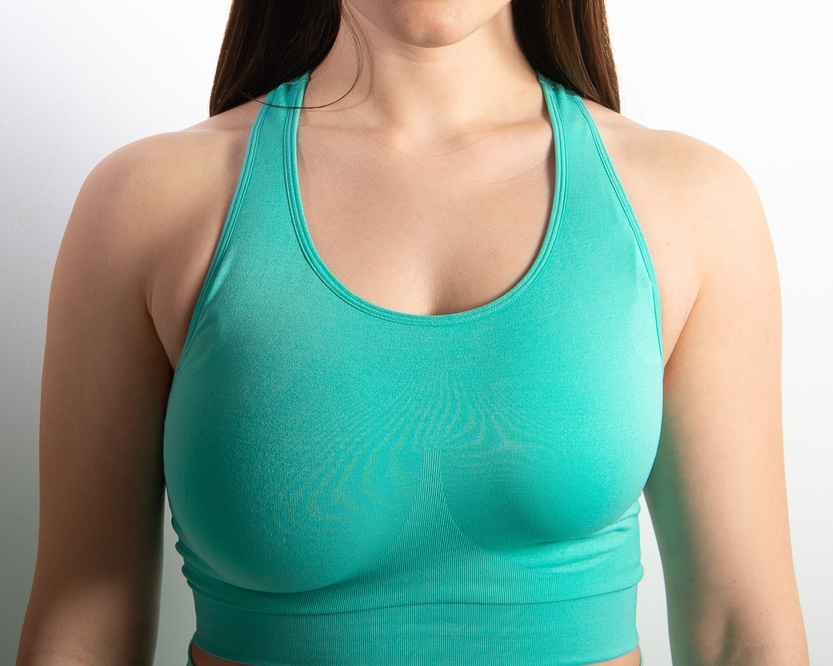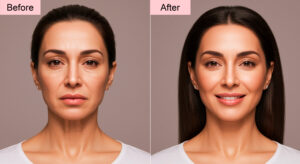It is normal for the right and left breasts to be unequal. The human heart and chest wall are not exactly symmetric. Breasts rest upon the ribs which are never perfectly symmetric. Differences in breast skin surface area, breast gland size and distribution, areola size and position, and other variations between right and left breasts contribute asymmetries. Because some degree of asymmetry is a normal condition, what determines if treatment is indicated to match the size, shape, and appearance of each breast to the other?
Three factors should be considered: 1. Impact of breast asymmetry to the individual, 2. The objective proportion of asymmetry between breasts, and 3. Expected surgical imperfections, scars, and risks of treatment.
The first and most important understanding is to what degree physical breast asymmetry is problematic for the woman? Some with more dramatic asymmetries use bra inserts or another means to visually correct appearance and wish to avoid surgery. Others want improvement of minor differences between the breasts to better fit tops or because they are observant and sensitive to imperfections. Treatment of breast asymmetry San Diego is directed by both physical and psychological presentation because the ambition of the procedure is patient satisfaction with the result and confidence in her appearance. Exactly what features she wishes to symmetrize are important to develop a plan for her desired correction.
Second, objective measurement of differences in breast size, shape, and appearance are considered. Estimation of breast size can be by observation, by inserting physical sizers into a bra cup until both sides are equal, and by 3-D computer analysis with Canfield or another system. Breast skin surface area differences are judged, and distances compared between right and left sides such as areola diameter, nipple position, skin below the areola, skin above the areola, and nipple to chest midline. If present, the position of the skin crease at the bottom of the breast is compared between right and left sides. Breast gland distribution and contour asymmetries may exist. Data is recorded and applied to formulate a plan for converting her breasts from an aesthetic liability to an asset.
The third consideration is surgical detriment. Surgery is an injury. Scars result, complications may happen, and the outcome is imperfect. So, the question becomes: will the anticipated improvement from surgery in her situation, her own view of her breasts, her confidence wearing what she wants and her success in life situations be worth the expected asymmetric scars of a one-sided (unilateral) breast lift (mastopexy) or an asymmetric breast lift? Is the risk of breast implant related capsular contracture worth the expected improvement? Is more than one procedure necessary to achieve a pleasing result, and is she prepared for that? Before surgery to correct breast asymmetry, each woman with her plastic surgeon San Diego weighs the downside of a procedure (cost, risk, potential complications, recovery time) against the expected upside of more symmetric and beautiful breasts. Some examples of “before and after” surgery for breast asymmetry are shown HERE. For more information, call 858-295-4001 or submit your questions HERE.

 Book Now
Book Now













